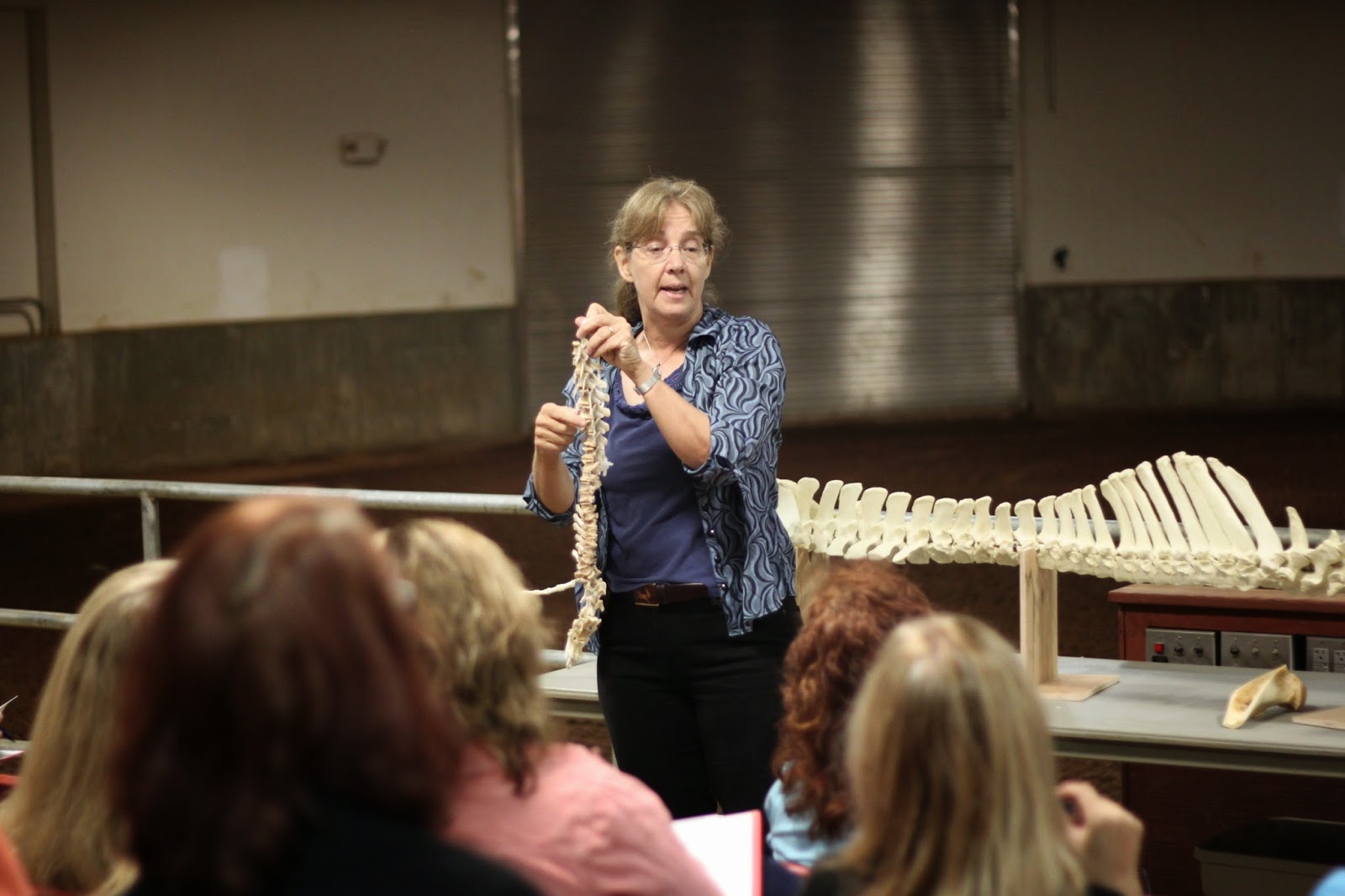"Which Came First, the Lameness or the Lesion?"
Led by Dr. Elizabeth Uhl, UGA CVM Department of Pathology.
Oh, man. This was enlightening.
So here's a rundown: the main gist is that painkillers aren't going to solve your horse's problems. If there is a problem with the way a horse moves or uses his body, he will break down. He will continue to break down until his movement, the mechanics of his movement, are corrected.
 |
| Dog spine. |
 |
| Human spine. |
When we collect a horse or bring a horse into contact, the spine isn't moving upward nearly as much as we feel like it is. What we feel is thrust. The back end pushes up into the front end, where the legs act like pogo sticks. She mentioned picking up a dog's hind legs and trying to get it to walk forward on its front legs. It isn't natural because the front legs don't pull. They slingshot forward by the force made by the back end.
Dr. Uhl also talked about transverse rotation of the spine. This is the explanation for feeling a shoulder drop or crossfiring. When bending, instead of the vertebrae staying straight, they angle outwards from the top. The correction she offered for this was, under saddle, lots of correct lateral work. In hand, to slow things down, increase balance and correct asymmetry.
| From Science of Motion. |
She studies with Jean Luc Cornille and advised everyone interested to purchase his book/dvd "Science of Motion." It's on my list!
 |
| Tossed in some Georgie and his unicorn. |
Other quotes:
→ "As long as you accept that the lameness is incurable, it will be."
→ "When it's right, it's easy."




















.JPG)

9 comments
I literally just squealed reading the first paragraph you wrote because I KNEW this had to be connected to Jean Luc and Science of Motion in some way. I've been riding with him for years and cannot even begin to explain how much his philosophies have changed my riding forever. I recently blogged about a clinic with him incase you're interested in reading more. I cannot recommend you buying his book or going to audit a clinic enough!
ReplyDeleteTHE CHIRO THING I"VE BEEN SAYING ALL ALONG. The more dynamic way to help a pony with with massage therapy and proper work (i.e. Physical Therapy) like us! :D
ReplyDeleteSoooo I totally went and looked up Jean Luc Cornille and have added his books to my Amazon wish list!
ReplyDeleteLove this! Very insightful.
ReplyDeleteVery interesting. Wish we had something like that around here.
ReplyDeleteFascinaying
ReplyDeleteOops fat fingers typing on touchscreen...supposed to say fascinating
DeleteSounds like that would have been interesting to hear.
ReplyDeleteMan, can we start a book exchange going or something? Sounds like a very interesting and informative lecture!
ReplyDeleteThanks!